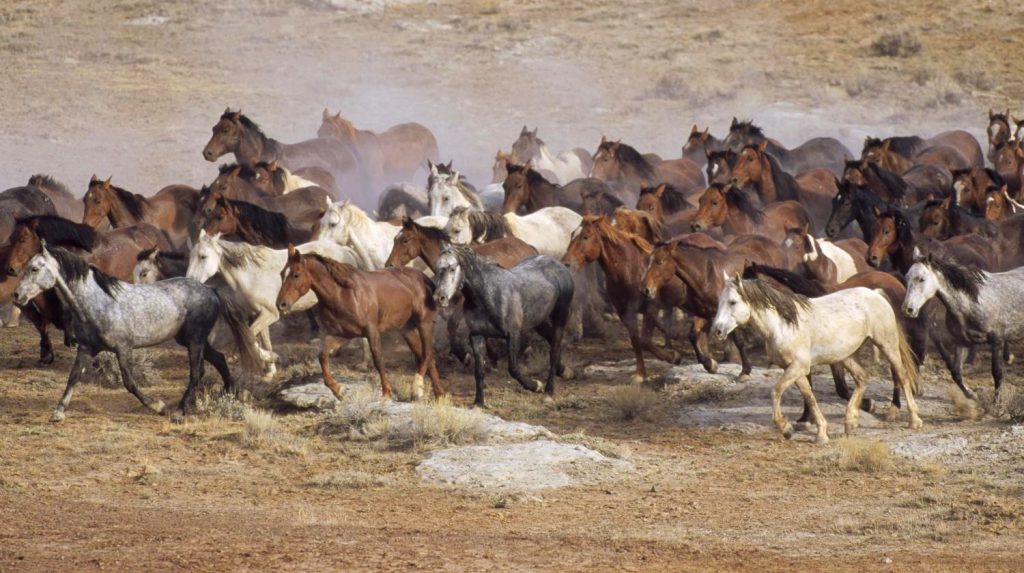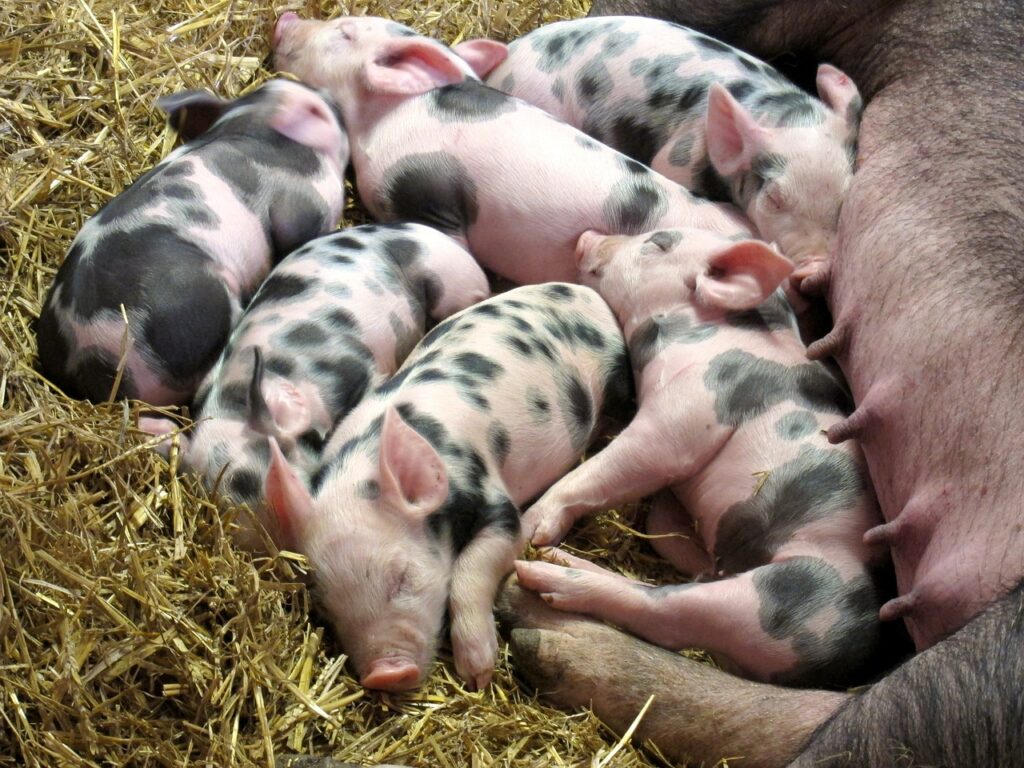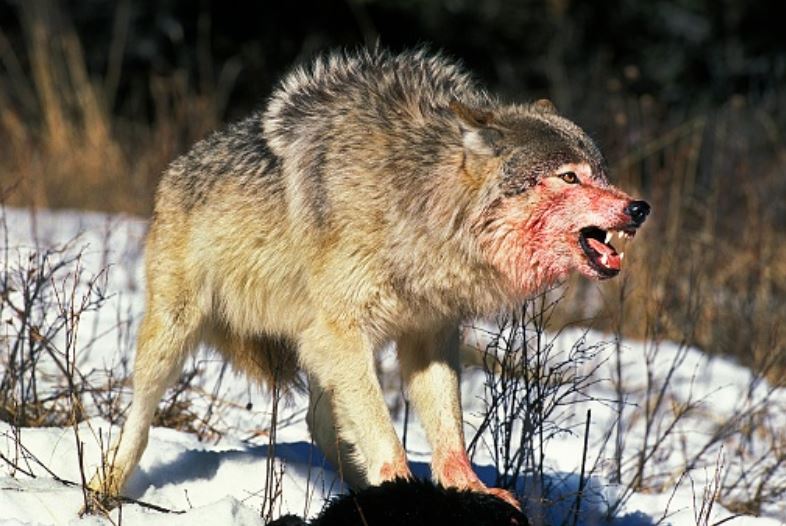EXTREME ENVIRONMENTALISTS’ DREAM OF “REWILDING” THREATENS RURAL AMERICA
Rewilding Devastates Rural America & Food Production
Protect The Harvest supports meaningful and balanced conservation along with the right to hunt; rewilding, however, is something much different. It is painted in the rosy colors of enhanced conservation to disguise the devastating effects it is already having on portions of rural America, from livestock production to private property rights. The rewilding movement is systematically chipping away at rural living—and more alarmingly, the food production in rural areas that our nation, and the world, rely on.
What Is Rewilding?
The term “rewilding” is innocuously defined by Merriam-Webster as “the planned reintroduction of a plant or animal species, and especially a keystone species or apex predator (such as the gray wolf or lynx) into a habitat from which it has disappeared (as from hunting or habitat destruction) in an effort to increase biodiversity and restore the health of an ecosystem.”
While wild places are certainly necessary and valued by the general population, the core beliefs of the rewilding movement are that:
• Humans are not part of the ecosystem and have no part in nature
• The millions of acres of protected lands already around the globe are insufficient
• Existing protections for apex predators are insufficient
• Even while there are plentiful populations of apex predators like wolves and grizzly bears in other parts of the world, they need to be restored to areas where they roamed over a century ago
• Much of our rural lands should be returned to nature to allow “unrestricted movement among wide ranging animals.”
Preservation of Farmland = Preservation of Mankind
The preservation of already protected lands and species are something that few would argue with. However, as rural agricultural areas increasingly succumb to suburbia, the active and deliberate preservation of farming and ranching lands and the activities upon them is equally, if not more important. This is not to say that the need for wild spaces decreases—but nor does it increase.
As the urban-based rewilding movement flaunts fantasies of an Ice Age renaissance and plans for a continental wildlife park that would cripple rural America, it has been estimated that 6,000 acres of open space are lost in the United States every day to development. Farmlands become suburban neighborhoods, and the space available for food production diminishes bit by bit—while demand for living space increases, so too does the demand for food.
Caught in the middle of this untenable situation, with ever-increasing pressure from both sides, is a substantial portion of our nation’s food production. We simply cannot afford to allow the rewilding movement to hijack our productive rural areas for the sake of their extreme environmentalist visions, especially when the world’s need for food is anticipated to increase by 100% by 2050.
Even today, 1 in 8 people, or 842 million, struggle with hunger every day, and nearly 1 billion people in the world are food insecure, meaning they lack access to a sufficient quantity of affordable, nutritious food.
For extremist environmentalists to actively seek to exacerbate this situation for the sake of their delusional wilderness utopian vision borders on the criminally insane.
The Implementation Plan for Rewilding
Rewilding wears different masks and is being pursued in different ways around the globe, but the core tenets of the movement are as bizarre as they are threatening, and smack of an Orwellian dystopia.
• Introducing apex predators to areas where there are none
• Creation of protected wildways
• Depopulating rural areas
It Is Not a Hollywood Fantasy – The Wildlife Corridors Conservation Act of 2019
In North America, we are seeing the reestablishment of dangerous apex predator populations with increasing attacks on livestock and humans as well as devastation to wild herd animals like elk and deer, and government representatives seeking to mandate rewilding through legislation; on the other side of the globe, reminiscent the movie Jurassic Park, steps are being taken to recreate the Pleistocene era and resurrect wooly mammoths.
While an Ice Age themed park might seem to be a mere whim of an eccentric scientist, the park’s existence demonstrates the mentality and level of commitment of rewilding zealots. Most concerning is the fact that those pushing for rewilding aren’t just fanatical fringe groups, as proven by the introduction of the Wildlife Corridors Conservation Act of 2019 to United States Congress.
Government Officials Embrace Rewilding Alongside Extremist NGOs
From its environmental extremist origins, the concept of rewilding has taken hold and evolved into a worldwide movement being pushed in a number of ways by a variety of interconnected entities, from private NGOs to government officials and agencies.
There is an incredible number of groups supporting rewilding and already implementing it on different levels. We have written about various rewilding efforts several times in the past. Read about the American Prairie Reserve, Wilderness Corridors Act of 2019, and Ventura County, California on our website. These articles offer insight into what rewilding actually means for communities.
Rewilding Relies on Apex Predators & Protected “Wildways”
Rewilding NGOs’ mission is to restore lands to a wilderness state with a focus on large predators such as wolves and grizzly bears serving as “regulators.” Groups like these seek to “advance continental-scale conservation” through the establishment of “protected wildways” for the movement of large carnivores through a “wildlands network.” Releasing apex predators is a first step toward rewilding, and the next step is to impose overreaching rules and regulations to rural areas in order to create the “wildways.” This map offers an example of what this would look like. Please note the “little to no human use” and “highly regulated use” zones.

Rewilding Equals Depopulating
There seems to exist in the rewilding movement a pervasive underlying assumption of guilt for human progress and even existence. Founders of Wildlands Network, Dr. Michael Soule and Dr. Reed Noss, stated in an article that without apex predators being present in wild spaces, “human opportunities to attain humility are reduced.”
In the late 1980s, a pair of eastern urban professors, Drs. Frank and Deborah Popper, proposed the Buffalo Commons. Their plan was very similar to what American Prairie Reserve is doing now.
According to a March 2019 Mountain Journal article by Shawn Regan, the Poppers believed that “the plan would…rectify the past wrongs of the homesteading era that caused so much of this great land to be plowed under and developed. Settlement of the region, they wrote, was the largest and longest-running agricultural and environmental miscalculation in American history.” They proposed that the region be “returned to its original pre-white state” and “in effect, deprivatized.” Buffalo would roam free across the plains, which, according to the Popper’s vision, would “become almost totally depopulated over the next generation.”
Introduction of Apex Predators is Already Harming Rural Areas
Even without continental-scale “protected wildways” in place in North America, the introduction and protection of apex predators in various areas is already demonstrating the early effects of rewilding all too well. The presence of wolves, grizzlies, and mountain lions is already drastically affecting livestock producers and crop farmers, as well as rural living and recreation. The addition of mandated “corridors” as in the Wildlife Corridors Act creates only loss of private property rights and ability to defend livestock, crops, and property— is this a step toward eminent domain being exercised for wildlife? There are several prominent examples of the effects of introduced predators on rural areas, that plainly illustrate what is just the proverbial tip of the rewilding iceberg.
Wolves In The West
Perhaps the most well-known action toward rewilding has been the reintroduction of wolves to Yellowstone National park and central Idaho. Wolves were once widespread across North America, and even though wolves were largely eliminated from the lower 48 states, Canada and Alaska have always had substantial populations of wolves. It is very important to note that the reintroduction of wolves to the lower 48 states was not due to any overall endangerment to the species; there are estimated to be nearly 200,000 gray wolves worldwide.
The gray wolves brought to Yellowstone in the 1990s were not the Northern Rocky Mountains wolves that were originally present in the area, but instead, the larger, more aggressive Canadian timber wolves.
Wildlife officials maintain that the wolves introduced to Yellowstone and Idaho differ little biologically from those originally present, and that differences in size and temperament would be due to other factors, such as terrain and available prey. Such differentiations are inconsequential when the devastating effects to big game populations and livestock are taken into consideration.
The idea of reintroducing wolves to Yellowstone was initially brought to Congress in 1966 because of concerns about the high numbers of elk in the park overgrazing. While it took nearly 30 years of studies, surveys, and political jostling against staunch opposition to get wolves brought to the areas in question, the year 1995 saw the beginning of wolves being implanted in Yellowstone and central Idaho.
Idaho Wolf Population Grows, Elk Population Crashes
US Fish & Wildlife Service data shows that from 1995 to 2012, the central Idaho wolf population grew from the 35 released to 480. In that same time period, the elk population went from nearly 17,000 to less than 4,000. The group Idaho For Wildlife reported a 93% decline in elk harvested by hunters in the Lolo region since the introduction of the Canadian gray wolf.
Record Number of Livestock Killed in Idaho & Montana in 2019
In October 2018, the Idaho Farm Bureau reported that since 1995, wolves had killed 3,114 sheep, 757 calves, 184 cows, 86 dogs, and 9 horses. Those numbers continue to rise. Another record number of wolf kills in Idaho was set in fiscal year 2019, with 175 livestock deaths confirmed.
As of January 2020, Idaho has new population estimates of 1,541 wolves. This is 10 times more than the number that was required for Endangered Species Act protections to be removed, which happened in 2011. More specifically, recovery criteria required 150 wolves statewide and 15 breeding pairs.
For the third consecutive year, Montana has also reported a record high depredation number, with attacks on livestock by not only wolves, but grizzly bears as well. There were 352 claims of wildlife attacks on livestock in the first 10 months of 2019.
Residual Stress From Large Predator Attacks Kills Many More Than ‘Official’ Count
The number of livestock deaths caused by large predators, but not officially confirmed by wildlife officials, is substantially higher. Deaths caused by the residual stress of an attack cannot be definitively proven. Many livestock producers report other long-term effects such as weight loss, flightiness, and miscarriage in pregnant animals—all of which affect an operation’s bottom line. Interestingly, there is no outcry from animal rights activists about the incalculable terror inflicted on livestock by apex predators.
Some, but not all states with wolves have programs are in place to compensate producers financially for confirmed wolf kills, but official confirmation doesn’t happen without a timely necropsy by a wildlife biologist.
Wolves Spread To Neighboring States
Naturally, the Idaho and Yellowstone wolves have multiplied and spread to neighboring states. Packs are present in Washington, Oregon, Montana, and northern California. Wolves have been sighted in Colorado as well, but are not officially established. Heedless of the effects wolves have had in other western states, activists have submitted a petition for a 2020 ballot measure that would mandate the official introduction of gray wolves to Colorado.
Gray wolves are not only a problem for rural dwellers and livestock producers in the northwestern United States. Minnesota is home to over 2,000 gray wolves, with Wisconsin and Michigan also having around 900 and 600, respectively. North Carolina is home to the red wolf, and southwestern states have had to deal with the reintroduction of the protected Mexican gray wolf. In rural areas of some states, “kid cages” have been installed at bus stops to protect waiting students.
Hunting wolves is currently only allowed in Alaska, Montana, Wyoming, and Idaho. With the recent record numbers of wolf kills of livestock, and an inconsistent wolf hunt success rate, it’s clear that that the problem can only worsen.
Wolves Create More Issues by Affecting Game Movement Patterns
Besides the direct death loss impacts on livestock and native big game herds, wolves create other problems by affecting the movement patterns of animals like elk and deer. In Idaho’s Wood River Valley, for example, there were five dogs attacked by mountain lions within a week in December 2019. The big cats had been “bumped” out of their normal winter habitat in higher terrain by wolves, which have also forced prey animals closer and closer to populated areas.
Pressure from wolves also forces herds of deer and elk into private grazing lands as well as some crop farmlands.
Wolves Increase Spread of Disease in Wildlife
In addition, the increasing range of deer, moose, and elk caused by pressure from wolf packs creates a greater potential for the spread of diseases such as chronic wasting disease and brucellosis, a disease that is easily spread from elk and buffalo to livestock, and can also be transmitted to humans.
Attacks on Humans
Recent years have seen a number of attacks on humans by large wild carnivores. In 2019, a wolf attacked a campers’ tent in Canada, and there were multiple grizzly attacks on hunters in Montana. In 2018 a woman was treed by wolves in Washington and had to be rescued by helicopter.
Certainly, the risk of encounters with large predators is something that most outdoorsmen understand and accept; however, the increase in number and frequency of such incidents in recent years is of great concern, especially since some animals are protected and some states don’t allow population management through hunting. Even where hunting wolves is allowed, hunters’ success rates are usually relatively low and do little to effectively slow the ever-expanding population.
The California Department of Fish and Wildlife (CDFW) can issue depredation permits against any offending lion, if there is proof that the mountain lion has preyed upon or threatened domestic animals or private property. Mountain lions can also be killed at any time if deemed a threat to the public’s safety. In 2013, California Governor Jerry Brown signed a law that protects lions that wander into populated areas. A lion can only be killed by law enforcement or wildlife officers if it is posing an imminent threat to human life.
You can read the full report by clicking here
For excellent gift ideas and subscriptions, please visit the RANGE magazine Mercantile.





Well, I am an APEX predator.
As such, I will act accordingly.
SSS